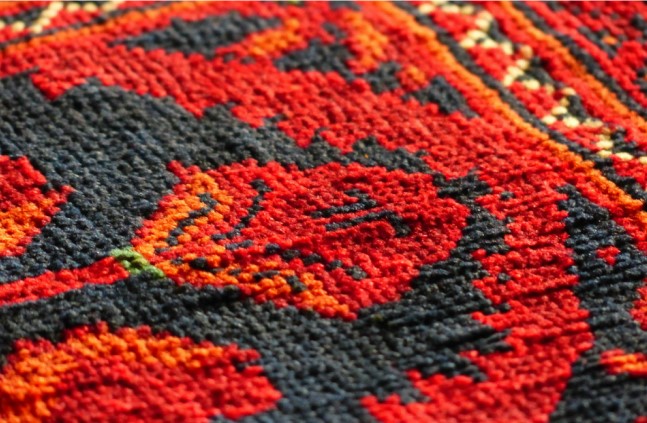
Carpet & Rug Care From Deluxe Dry Carpet Cleaning Services
Natural & Vegetable Dyes
One of the most common vegetable dyes is Madder. It comes from the root of the madder plant, the root is cut up and dried and then boiled It produces a red colour and is the typical red seen in old rugs. Another natural red colour is the magenta red palette of colours that comes from cochineal. Cochineal is made from an insect the female of which is roasted and dried and pounded to a powder, when mixed with water the colour is a vivid magenta.
Saffron is the natural yellow colour that is used in cooking and also used to dye rugs. It is a part of the crocus flower and has been used for centuries, when saffron is mixed with madder or cochineal it produces many different colours of orange and orangey red. Saffron is a very expensive way to make yellow. Yellow can also be made from the flowers of the larkspur plant. Almonds and pear leaves are also used to make shades of yellow for dyeing wool and silk and cottons.
Indigo is the most famous natural blue dye. It is made from the indigo plant, the leaves and flowers are collected and fermented for at least seven days, the solution is an amber colour but when wool is soaked in the liquid and dried it turns a dark navy blue. When indigo is mixed with madder it creates purple and when mixed with saffron it creates green. Green is a very important colour as it is required for the depiction of trees and vegetation in a rug design and there is no natural green dye, it has to be created from indigo and yellow. To produce green coloured wool for a floral design on a rug, the wool must first be dyed using indigo to make it blue and then dyed again with a yellow dye from larkspur.
Black dye colour is made by mixing browns with indigo or it can be made using dyes from bark of trees.
The depth or shade of the colour in wool dyeing is controlled by weakening the dye. The first dyeing will create the strongest colour, the subsequent dyeings will produce wool with less colour and a lighter, softer shade. The combination of dye colours is also controlled to produce stronger and lighter mixed colours of green, purple orange etc.
Where a mixed colour is used, there are often resulting variation in that colour in one rug. If you examine the colours of an old rug you can see that the green is blue-green in one area and green- blue in another because of the double dyeing technique used in mixing the dye for the wool.
Synthetic Dyes
The first synthetic dyes were tried in the late 19th century in Persia and because they were so crude in colouring properties they were banned from rug making manufacture. They were garish in colour and unstable, the rugs they were made from faded in colour and were ugly colours. To protect the reputation of the Persian rug the Persian government banned import and use of these dyes and there were extremely strict punishment for their use, the dye producers had their dye houses burnt. The first good quality wool dyes were developed in the 1920s and they slowly became acceptable for dyeing the wool for Persian rug manufacture. Synthetic dyes are now a feature of rug manufacture because they are so easy to use, they are very reliable in their stability and they have been developed to fade “naturally “ with the age of the rug they are available in a huge range of colours and are colour fast.